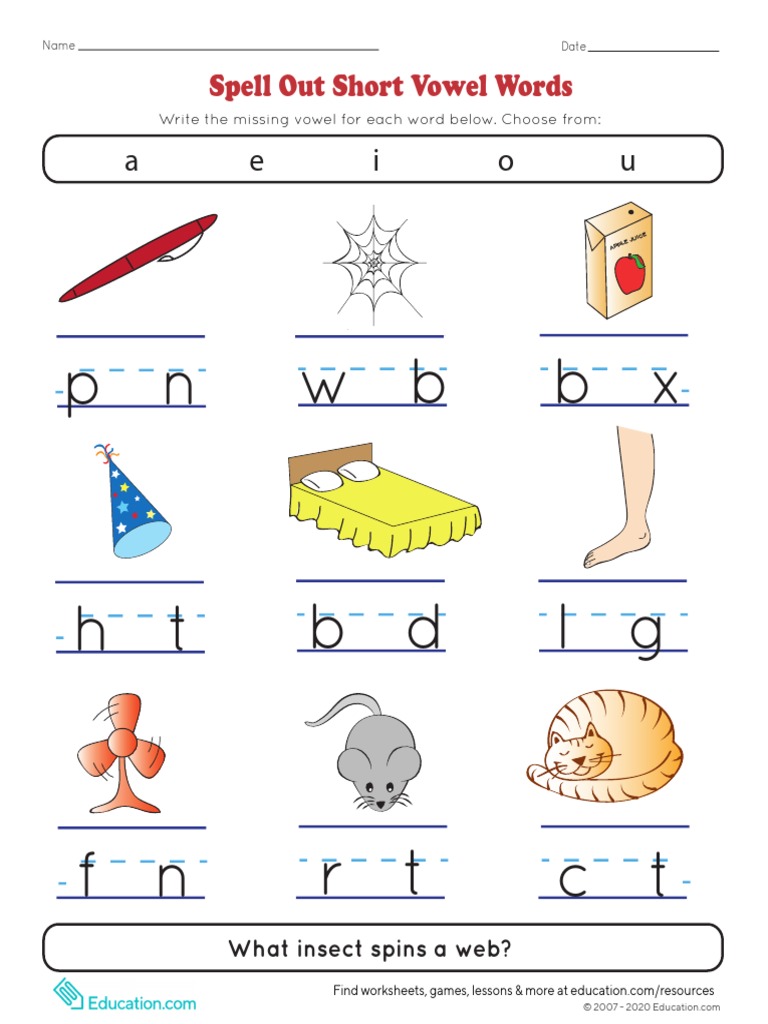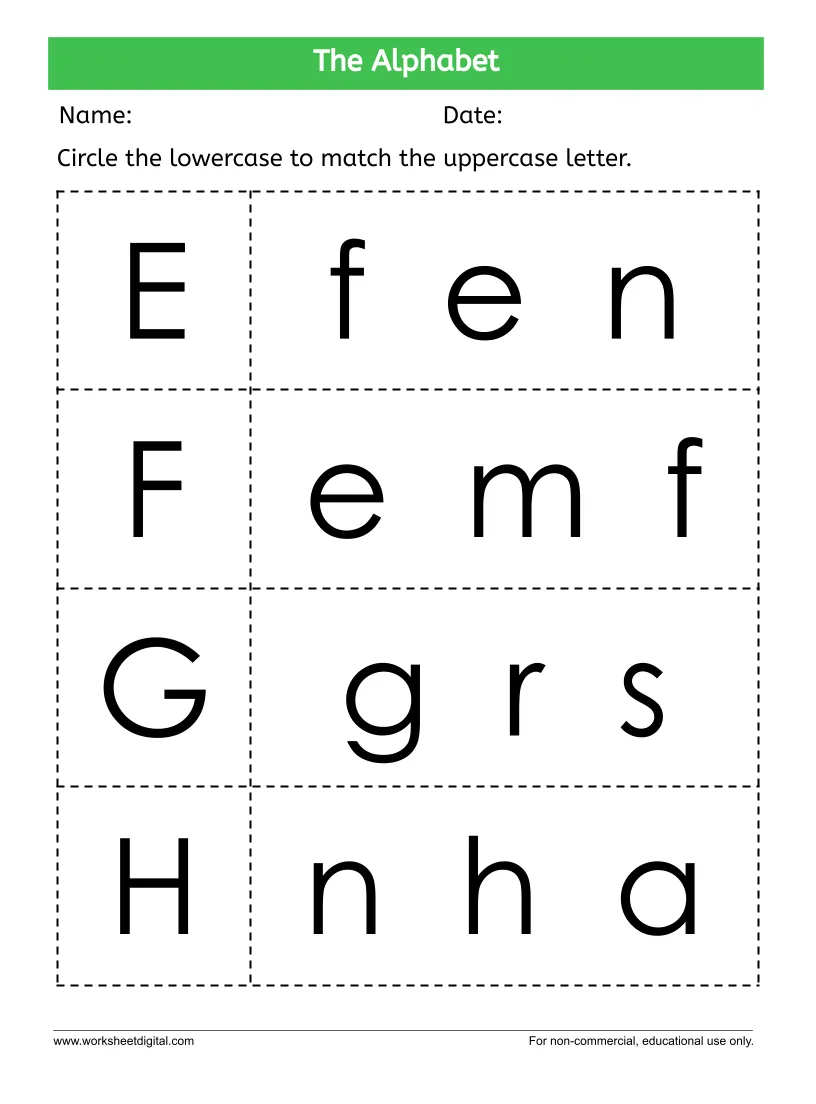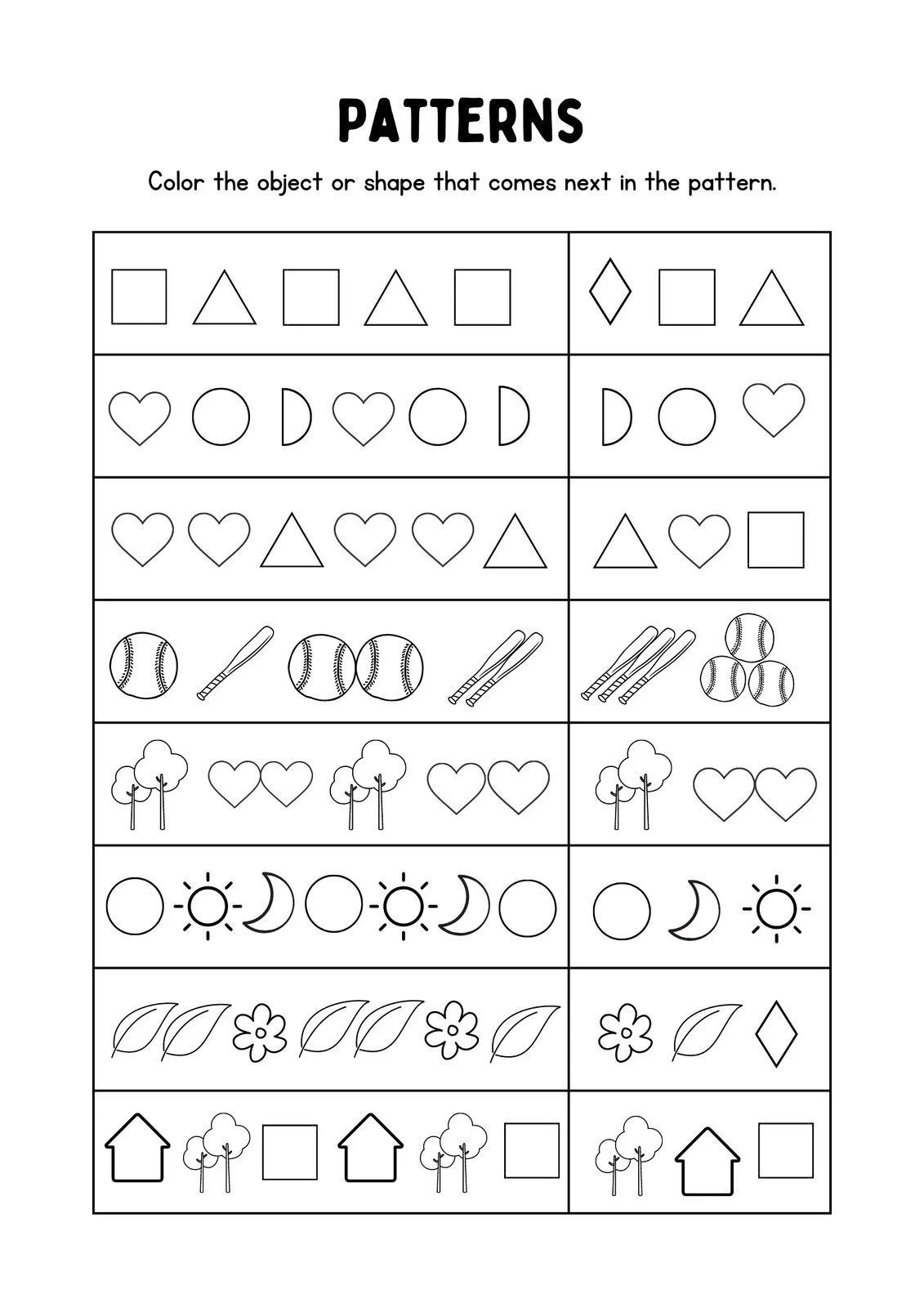Learning to spell is a crucial skill that lays the foundation for reading and writing. Among the essential components of spelling are short vowel words. These words not only help children grasp the concept of vowels but also enhance their phonetic awareness and reading fluency. In this article, we will explore short vowels, provide lists of short vowel words, and offer tips for helping young learners spell them effectively.
Understanding Short Vowels
In the English language, vowels are the letters A, E, I, O, and U. Each vowel can represent two main sounds: short and long. Short vowels are pronounced quickly and with less emphasis. Here’s a breakdown of the short vowel sounds:
- A as in “cat”
- E as in “bed”
- I as in “hit”
- O as in “dog”
- U as in “cup”
Recognizing and pronouncing these short vowel sounds is essential for spelling short vowel words.

Lists of Short Vowel Words
Here’s a selection of short vowel words categorized by each vowel sound:
Short A Words
- Cat
- Hat
- Bat
- Rat
- Mat
- Sat
- Pat
- Can
- Man
- Fan
Short E Words
- Bed
- Red
- Led
- Fed
- Shed
- Hen
- Men
- Ten
- Pen
- Jet
Short I Words
- Sit
- Hit
- Bit
- Kit
- Lit
- Fit
- Pin
- Tin
- Win
- Him
Short O Words
- Dog
- Log
- Fog
- Hog
- Jog
- Pot
- Lot
- Cot
- Not
- Top
Short U Words
- Cup
- Bus
- Mud
- Fun
- Sun
- Run
- Bug
- Hut
- Nut
- Pug
Tips for Teaching Short Vowel Words
Teaching children to spell short vowel words can be a fun and engaging process. Here are some effective strategies to help young learners master short vowel spelling:
1. Phonics Practice
Integrating phonics into your teaching approach is crucial. Phonics focuses on the relationship between letters and their sounds, which is vital for spelling. Here are some activities you can try:
-
Sound Isolation: Ask your child to say the short vowel sound and then identify words that contain that sound. For example, for the short A sound, they might say “a” and come up with words like “cat” and “bat.”
-
Rhyming Words: Create a list of rhyming short vowel words to reinforce spelling patterns. For example, for short A, you could use “cat,” “hat,” and “mat.”
2. Visual Aids
Using visual aids can help reinforce learning. Consider the following methods:
-
Word Walls: Create a word wall in your learning space featuring short vowel words. This visual reference will help children recognize and remember these words.
-
Flashcards: Use flashcards with images representing short vowel words. For example, show a picture of a “cat” alongside the word. This can help with visual recognition and spelling practice.
3. Hands-On Activities
Engaging children with hands-on activities can make learning more enjoyable. Here are a few ideas:
-
Letter Tiles: Use letter tiles to spell out short vowel words. Ask your child to arrange the tiles to form words, reinforcing the spelling visually and physically.
-
Craft Projects: Create crafts that incorporate short vowel words. For example, you could have children cut out pictures from magazines and glue them next to the corresponding short vowel words.
4. Games and Challenges
Incorporating games into spelling practice can boost motivation and engagement. Consider these ideas:
-
Spelling Bees: Host a mini spelling bee focusing on short vowel words. This not only helps with spelling but also builds confidence in reading aloud.
-
Word Searches: Create word search puzzles that feature short vowel words. Children will enjoy the challenge of finding and circling the words, reinforcing their spelling in a fun way.
5. Writing Practice
Encouraging writing practice is essential for reinforcing spelling. Here are some methods to incorporate writing:
-
Journaling: Have your child keep a journal where they can write sentences using short vowel words. This practice not only helps with spelling but also promotes creativity.
-
Dictation Exercises: Read short vowel words aloud and ask your child to write them down. This helps them connect the sounds they hear with the letters they write.
The Role of Repetition and Review
Repetition is key when it comes to mastering spelling. Here’s how you can ensure that short vowel words stick:
-
Daily Practice: Incorporate short vowel spelling practice into your child’s daily routine. Consistent exposure will reinforce their learning.
-
Review Sessions: Regularly review previously learned words to help solidify their memory. Create a fun quiz or game to keep it engaging.
-
Mix It Up: Avoid monotony by varying your practice methods. Alternate between worksheets, games, and hands-on activities to keep your child interested.
Conclusion
Mastering short vowel words is an essential part of early literacy education. By understanding the sounds of short vowels and practicing spelling through various engaging methods, young learners can build a solid foundation for reading and writing. From phonics practice and visual aids to hands-on activities and games, there are countless ways to make learning enjoyable and effective. So grab your flashcards, letter tiles, and creativity, and embark on this exciting journey of spelling short vowel words with your child!


